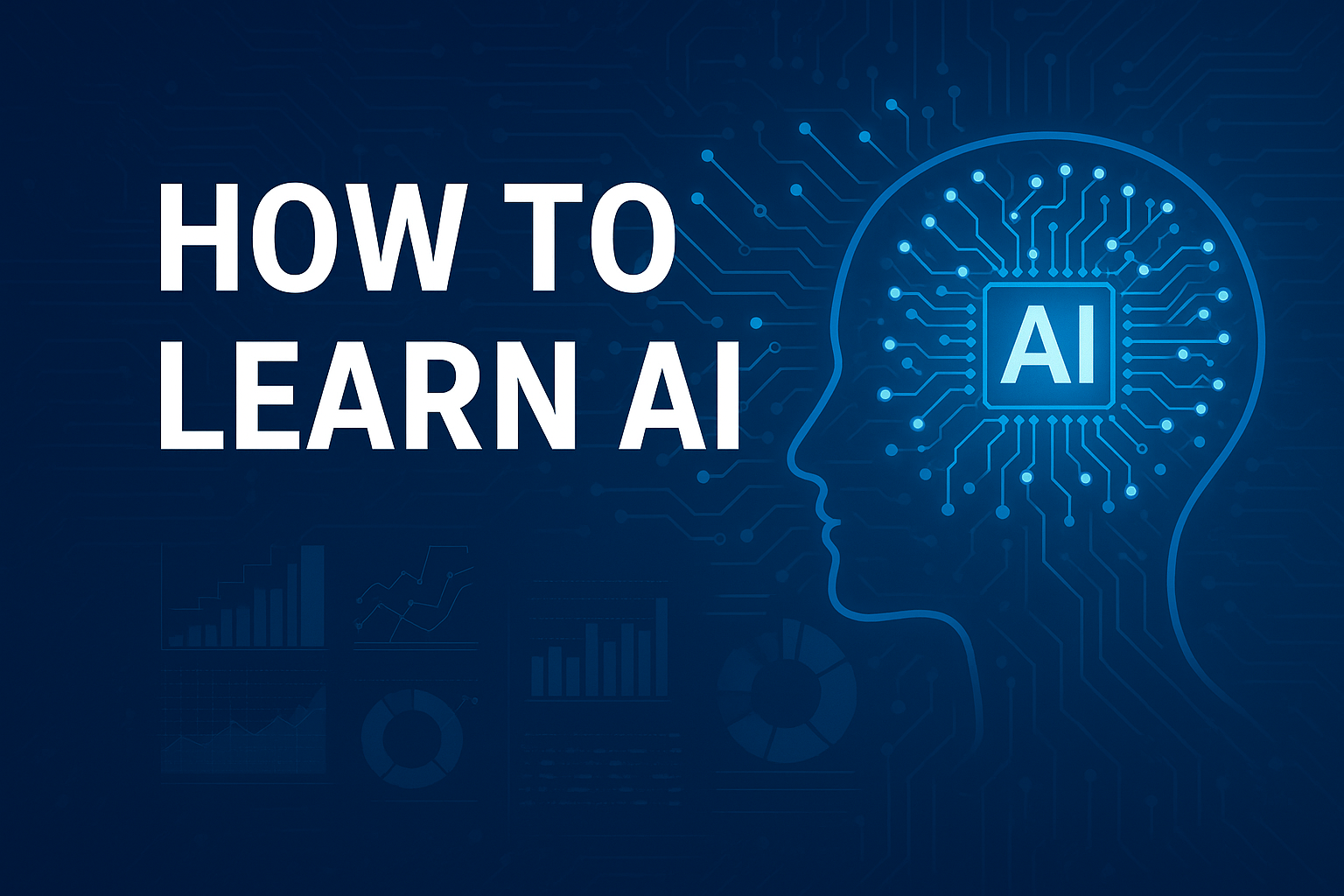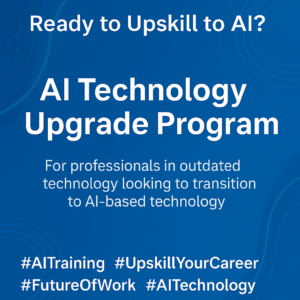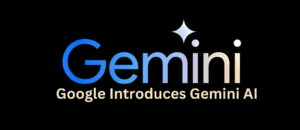We’re living through one of the most significant technological shifts of our time: the rise of Artificial Intelligence (AI). From chatbots and recommendation systems to autonomous vehicles and predictive analytics, AI is transforming how industries operate. For tech professionals, adapting to this change isn’t optional — it’s essential.
If you’re wondering how to begin or transition into AI, here’s a practical, phased roadmap to get you started.
1. Understand What AI Really Is
Before diving into frameworks and coding, it’s crucial to understand the core concepts:
- AI: Machines mimicking human intelligence (e.g., learning, reasoning).
- Machine Learning (ML): Algorithms that learn from data.
- Deep Learning (DL): ML using neural networks, especially for complex tasks like image and speech recognition.
- Natural Language Processing (NLP): Understanding and generating human language.
Resources to Start:
2. Brush Up on the Prerequisites
AI isn’t magic — it’s built on solid foundations. Strengthen your basics in:
- Mathematics: Linear Algebra, Calculus, Probability, and Statistics
- Programming: Python is the go-to language for AI development
- Data Handling: Learn to work with NumPy, Pandas, and data visualization tools
Tools to Learn:
- Python (with Jupyter notebooks)
- NumPy, Pandas, Matplotlib, Seaborn
3. Learn the AI/ML Ecosystem
Now, move into applied AI by learning key tools and libraries:
- Scikit-learn: For classical ML algorithms
- TensorFlow / PyTorch: Deep learning frameworks
- Keras: High-level neural networks API
- Hugging Face Transformers: For NLP applications
4. Build Real Projects
Theory is important, but nothing beats learning by doing. Create projects such as:
- Spam detection system
- Face recognition app
- Stock price predictor
- Resume parser with skill extraction
- AI-powered chatbot
Use platforms like:
- Kaggle (for datasets and competitions)
- Google Colab (for running notebooks in the cloud)
5. Dive Into Specialized Areas
Once comfortable with the basics, explore specialized domains:
- Computer Vision: Image classification, object detection
- NLP: Sentiment analysis, text summarization, chatbots
- Reinforcement Learning: Teaching models through reward systems
- Generative AI: Text/image generation (e.g., GPT, DALL·E)
6. Stay Updated and Join Communities
AI is a fast-moving field. Stay current by:
- Reading AI research papers on arXiv
- Following top AI blogs and newsletters (e.g., Towards Data Science, DeepLearning.ai)
- Joining AI communities and LinkedIn groups
- Attending AI meetups, webinars, and conferences
7. Apply AI in Your Domain
Whether you’re a web developer, backend engineer, or product manager, AI can enhance your domain:
- Web developers can integrate recommendation engines
- Product managers can use AI for data-driven insights
- Marketers can automate content generation and A/B testing
Start by identifying pain points that AI can solve and build small, scalable solutions.
8. Consider Formal Education (Optional)
If you want structured learning:
- Professional Certificates (e.g., DeepLearning.ai on Coursera)
- MicroMasters or online degrees (e.g., edX, Udacity)
- Master’s programs in AI/Data Science (for deeper research paths)
AI isn’t just the future — it’s the now. Whether you’re a beginner or an experienced tech professional, there’s a path for you in AI. The key is to start small, build consistently, and stay curious.
The world is shifting toward intelligent systems. Don’t just witness the AI revolution — become part of it.







